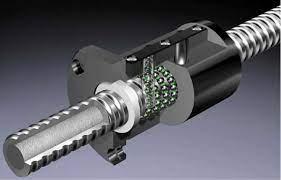Effective linear motion control solutions, including lead screws and ball screws, are required in today's motion-driven automation environments. Although lead screws are frequently considered to be less expensive alternatives to ball screws, selecting the right type of screw involves much more considerations than just price.
WanfGroup's product lineup includes both ball screws and lead screws, which are essential components of a successful linear motion transfer system. Both a ball screw and a lead screw could be used in many applications, but because of their differences, certain uses will benefit more from using one over the other.
What are Ball Screws and Lead Screws?
Our selection of precision screws includes ball screws and lead screws. To convert rotary motion into linear motion, they are utilized.
Lead screws and ball screws are both threaded metal bars with a revolving ball bearing (ball screws) or a threaded nut (ball screws).
Ball Screw and Lead Screw Differences
Frequently, either a ball screw or a lead screw can be utilized in a given application. But there are significant distinctions between them.
The way they operate is the primary distinction. A ball screw design is significantly more intricate; it makes use of recirculating ball bearings to reduce friction while in use. A metal or plastic nut is used by a lead screw to move along the threaded screw. Ball bearings reduce internal friction, which is frequently connected with lead screw use.
The cost is another drastic difference between them due to how they operate. Ball screws are significantly more expensive than lead screws because they are more complicated.
Leadscrews can be engineered to self-lock, which is crucial for vertical applications and makes them operate more quietly.
The application that each type of screw is chosen for is another distinction between ball screws and lead screws.
Ball screws are typically more appropriate for industrial applications because these typically call for a higher load. They are best suited for applications that need continuous or rapid movement, great efficiency, accuracy, and precision.
Lead screws are utilized in OEM applications and smaller or lighter-duty applications. They may be altered more easily and are ideal for transfer applications where speed, accuracy, precision, and rigidity are not as essential as they are for ball screws in larger industrial settings.
Comparison Table of Lead Screws and Ball Screws
View the following comparison chart to observe the differences:
|
| Ball Screws | Lead Screws |
| Mechanism | Recirculating ball bearings | Threaded screw with plastic or metal nut |
| Industries and Applications | Large, industrial-scale applications | Smaller OEM applications |
| Price | Higher Cost | Lower Cost |
| Capacity | Higher Load Capacity | Lower load capacity |
| Design | Complex Design | Simple design – easy to customize for applications |
| Operation | High efficiency, accuracy, precision | Efficiency, accuracy, and precision are not as high |
Lead screws and ball screws differ fundamentally in that lead screws do not employ ball bearings to reduce friction between the nut and screw. Ball bearings can recirculate in the races of a ball screw thanks to the matching helical grooves in the screw and nut, which are typically semi-circular in the form to accommodate the spherical ball bearing.
Deeper helical threads are used in lead screws, and the mating nut is typically constructed of bronze or a polymer composite. Ball screws roll, which eliminates the sliding friction that is present with lead screws.
Conclusion:
Ball screws provide dependable performance and exceptional reliability; our ball screws constantly deliver on their promises. The materials are of the finest quality and can be utilized in a variety of applications, guaranteeing a long life.
There are several varieties of lead screws that we can provide. To decrease the need for motors, we offer assemblies with high axial rigidity, low backlash, and minimal drag torque. As a result, the systems they are utilized in will cost less, perform better, and last longer.
